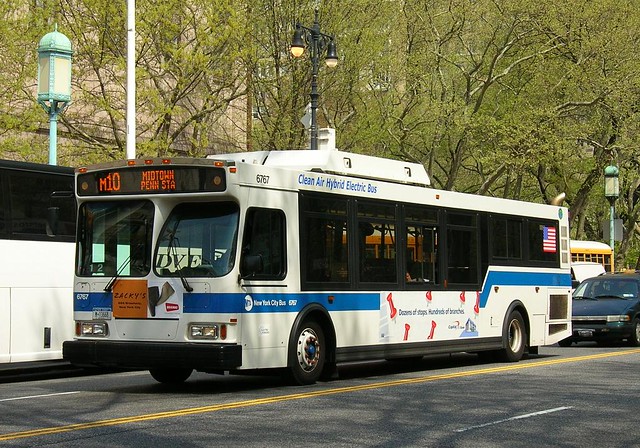 Governor Andrew Cuomo hasn’t ridden the subway since “last year, and now he’s planning on removing some state funds for the MTA when he unveils his budget tomorrow. According to a report in The Daily News, Cuomo will attempt to limit the cuts to “an amount the Metropolitan Transportation Authority will be expected to absorb while maintaining both the current MetroCard prices and level of service.” Color me skeptical.
Governor Andrew Cuomo hasn’t ridden the subway since “last year, and now he’s planning on removing some state funds for the MTA when he unveils his budget tomorrow. According to a report in The Daily News, Cuomo will attempt to limit the cuts to “an amount the Metropolitan Transportation Authority will be expected to absorb while maintaining both the current MetroCard prices and level of service.” Color me skeptical.
Pete Donohue has the bad news:
Gov. Cuomo soon will propose a reduction in MTA funding – but he doesn’t want to trigger an increase in what riders pay to ride the subway, buses and commuter trains, a source close to the administration said. The figure will be limited to an amount the Metropolitan Transportation Authority will be expected to absorb while maintaining both the current MetroCard prices and level of service, the source said…
MTA executives cut $500 million in spending last year. About 3,500 positions were eliminated, many through painful layoffs. But the Metropolitan Transportation Authority remains in a constant state of fiscal crisis. Its 2011 budget plan has a $75 million reserve – lunch money for an authority operating the largest subway system in North America and the country’s two largest commuter railroads.
Whatever its shortcomings, the MTA’s money problems aren’t the result of corrupt transit executives, bungling bureaucrats or greedy workers, as some critics contend. There never was an illegal “two sets of books,” a myth that emerged after an ethically challenged state controller released a scathing report on MTA finances. The real shell game takes place in Albany. Much of the MTA’s funding comes from a series of taxes the state Legislature enacted over time specifically to help pay the cost of transporting millions of people to their jobs every day – a public service one has a right to expect is both safe and affordable. The state collects the dough – but doesn’t always pass along the full amount to the MTA. It quietly skims off the top and uses it for other purposes.
In my opinion, Donohue is glossing over some key facts. He’s right to shoot down the claims of two sets of book; that’s one of the more infuriating myths that just won’t die. But a bloated bureaucracy, an inflexible union and some poor contracting practices that may or may not resemble corruption are certainly to blame, in part, for the MTA’s structural and economic problems. The MTA is not a blameless victim here.
That said, Donohue hits on a few key points here. The MTA has made a concerted effort to save money over the past 12 months, but that doesn’t mean the authority can absorb another funding raid. Had Albany not removed $143 million from the MTA’s budget last year, the service cuts could have been averted. Another cut will require the MTA to scale back on either services — such as station cleaners or in-system eyeballs — or transportation service, and neither of those choices is a desired outcome. If Gov. Cuomo truly believes he can cut the MTA budget without impacting service levels or the fare structure, he may be in for one unpleasant surprise.
Meanwhile, the very idea of dedicated funding is under attack. When the state legislature approves a tax with revenues dedicated for transit, that shouldn’t be an option appropriation. Those monies should never come under attack from politicians who aren’t responsible in their other spending decisions. Money for collected for transit should always be redistributed to transit.
Advocates are worried about the impact cuts will have on the MTA’s bottom line because those cuts will be passed onto the riders. How much more can New Yorkers take before holding Albany responsible for this mess?












 When Gov. Chris Christie canceled the ARC Tunnel in the fall, transit advocates from around the region were exasperated. Although the project had its design flaws on the Manhattan side, 20 years of planning and lobbying were flushed down the toilet by one stroke of the Governor’s pen. Furthermore, the region needs improved cross-Hudson rail access and simply cannot afford to wait another two decades to see shovels hit the ground.
When Gov. Chris Christie canceled the ARC Tunnel in the fall, transit advocates from around the region were exasperated. Although the project had its design flaws on the Manhattan side, 20 years of planning and lobbying were flushed down the toilet by one stroke of the Governor’s pen. Furthermore, the region needs improved cross-Hudson rail access and simply cannot afford to wait another two decades to see shovels hit the ground.